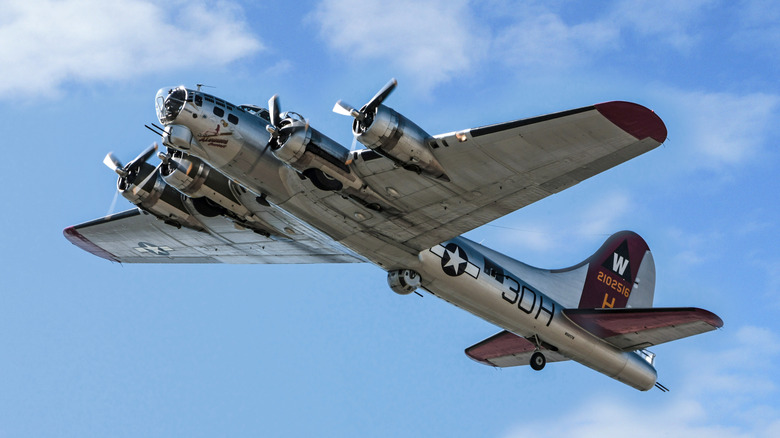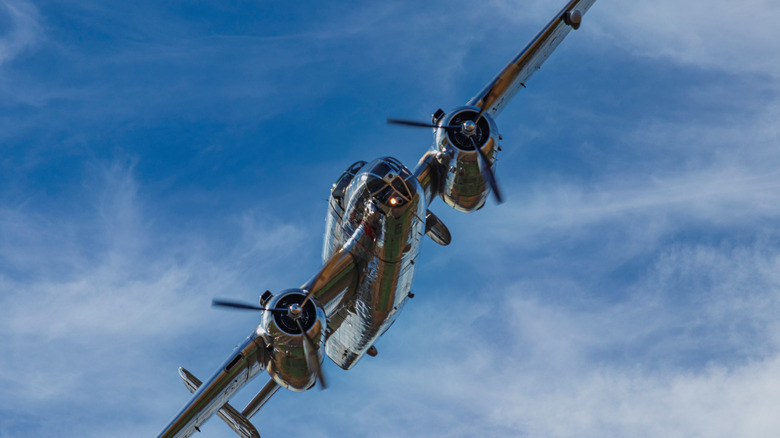Were WW2 Plane Cockpits Heated? Here's How Pilots Stayed Warm
There are those who might argue that World War II was won in the air. Without shading the grit displayed and sacrifices made by Allied Forces on land and at sea, the contributions made by forces in the air simply cannot be understated. Nor can the myriad dangers that fighter and bomber pilots faced every time they took to the skies, including the possibility of air-to-air combat and surface-to-air artillery. But of all the perils forces could face in the sky, one that doesn't get talked about enough is the frigid temperatures.
Those planes, after all, often found themselves flying at altitudes anywhere between 20,000 and 35,000 feet. They were also doing so in the days prior to pressurized cabins. When the expected lows of 60 degrees below zero Fahrenheit hit, the cockpit and cabin temperatures weren't much higher. Frostbite and other cold-weather maladies are a legitimate concern when flying for extended periods of time at those temps. And unfortunately for many WWII fighter pilots, their cockpits were not heated.
The same was not true for the pilots of the bomber brigade, as many of those aircraft had on board heating systems. Said systems typically didn't cover the entire plane, however, as the heat was primarily targeted towards keeping the pilot and co-pilot warm in the craft's cockpit. That begs the question of exactly how bomber crews and pilots at the helm of WWII's fastest fighter planes managed to stave off the cold.
Heating systems weren't always enough to keep crews warm at altitude
It's worth noting that fighter pilots and bomber crews were working in an enclosed environment, so they weren't facing those dangerously low temperatures directly. However, the cockpits and cabins weren't doing much to keep the cold at bay. Thankfully, Air Force engineers were aware of the potential perils at altitude. They devised other ways to keep crews of the famed Boeing B-17 Flying Fortress and the planes Ford made during WWII, as well as various fighters, warm while on the job.
The first line of defense was warm clothing. Pilots and bomber crews were bundled up in thick, sheep shearling clothing as well as fur-collared leather flight jackets like the G-1, B-3 and B-10 when they set off into the blue. Those crews switched from sheep shearling clothes to Alpaca-lined outfits later in the war, proving lighter in weight and more flexible.
Of course, warm clothes and bomber jackets weren't the only options that fighter pilots and bomber crews had when they faced off against their enemies. Even in the early days of the conflict, many pilots and crew members were decked out in electronically heated undergarments and plug-in flight suits. Among the latter options is the famed F-1, which earned the playful nickname "Blue Bunny" even though the flight suits were notoriously unreliable and sometimes malfunctioned to the point of burning those who wore them.

